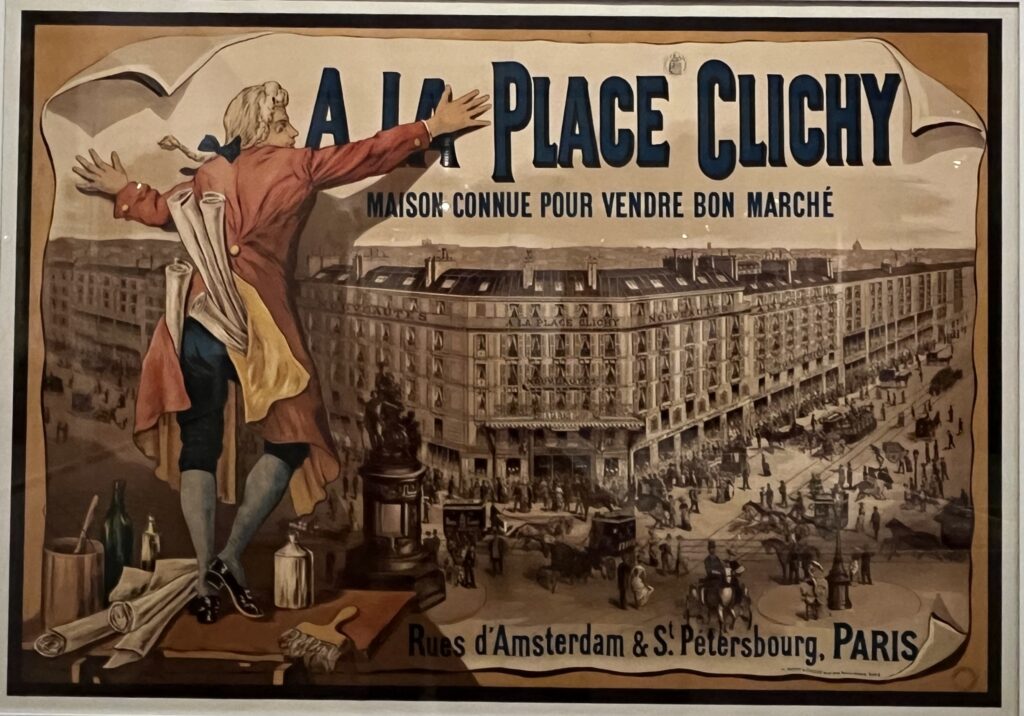
“A la Place Clichy”, opened in 1877 by Gailllard & Cie, was managed by Paul Argand, a great traveler. It specialised in oriental style carpets and furniture, 1880-1890
“The birth of Department stores” is a new show at Musée des Arts Décoratifs, devoted to the huge social revolution which they represented in 1852, when these “new temples of modernity” emerged under Napoleon III’s Second Empire. 80% of the seven hundred objects and posters exhibitied here belong to the rich collections of MAD. This emergence of popular spending, the child as new object of marketing, but also mail order and the invention of sales are all illustrated with superb posters, accessories and fashion as well as decors. And you can read Emile Zola’s social novel “Au Bonheur des Dames” to find out even more about this new commercial world.
The exhibition starts with the “bourgeois” portraits of very established bankers and entrepreneurs such as the Boucicaut (le Bon Marché), the Pereire, Schneider and Fould, to explain the huge economical changes that took place in the second half of the 19 th century. Paris is remodeled by Haussmann with larger avenues and photographer Charles Marville documents the destruction of each street with 425 photos in 1865. Railway networks are multiplied by 3, to almost 17 000 kms in 1869 after PLM (Paris Lyon Marseille) was created in 1857, and 113 millions travelers use the train. 44 million tons of merchandise are shipped on it. And trade benefits from it with deliveries being made to the rich clients in the provinces and even to London (where department stores were first invented).
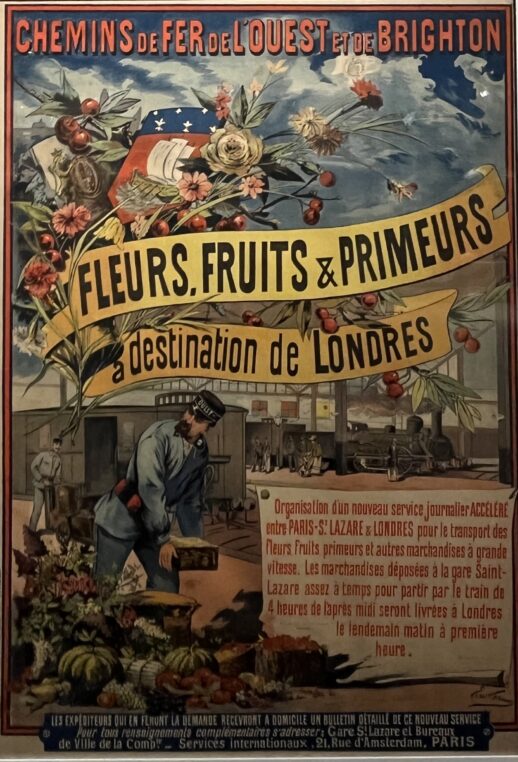
E. Nerme, second half of the XIX th century, Fruit and vegetable are being shipped daily from Gare Saint Lazare to London
Each store has a specific story. Emile Zola described in 1883, in “Au Bonheur des Dames” the Grands Magasins de la Paix, located near the Opera which went bust a year after they opened and were bought by Jules Jaluzot, the founder of le Printemps, in 1865. Aristide Boucicaut, started at le Bon Marché in 1852, bought it from its founders in 1863 and entirely rebuilt it. La Samaritaine was opened by Ernest Cognacq in 1870. Later, in 1912, the Magasins Crespin-Dufayel in Barbès, sold furniture on 1 hectare, with 15 000 employees. They started the credit services to encourage spending among the popular clients. It closed in 1930. The Grands Magasins du Louvre started in 1855 and were replaced by the Louvre des Antiquaires in 1978. Bazar de l’Hotel de Ville, founded by François Xavier Ruel in 1856, now belongs to Galeries Lafayette and is called BHV Marais.
Numerous catalogs belonging to the Bibliothèque des Arts Decoratifs instruct us on what was being sold in these stores. And the range of silver, electric chandeliers and plates is fascinating. The end of the exhibition is devoted to the 1925 Decorative arts exhibition with series of plates Primavera and wall papers edited by Galeries Lafayette. A small room devoted to the staff is very interesting with figures of employees and salaries. The story of an 18 year old girl hired in a store and paid only on commissions, who has to take a lover to survive, is very lively.
The details of each sales department with the number of employees by specialty and the turnover of the day are fascinating. In the fabrics department, there are mostly strong men. Young women are chosen for the fine linen department with the most elegant ones, selling gloves and silk… There are whole rooms where secretaries read and sort out the order letters. The unions publish little pink leaflets stating all the injustices like “sick days and holidays are not paid to the workers”.
While employees were often fed and housed and given access to medical care, they could work thirteen hours a day, in 1882. Emile Zola did a serious enquiry to write his novel “Au Bonheur des Dames” and is a precious source of information for the customs of the time. Mrs Boucicaut’s will is also exhibited and one can read the amount of money each employee is bequeathed after her death, according to the number of years they worked for Le Bon Marché. 10 000 F, for example, for over 10 years of employment.

Little films are used to promote objects and toys for children whose role in society has increased dramatically
In this sociological exhibition, what is most attractive is the series of lithographs of the time. One realizes that advertising was already very efficient and beautifully done. And the quick emergence and great number of very large stores is quite illuminating. You can take children to see it. It’s full of fashion items, little films and illustrations that will amuse them.
Until October 13, at MAD.
Share this Post
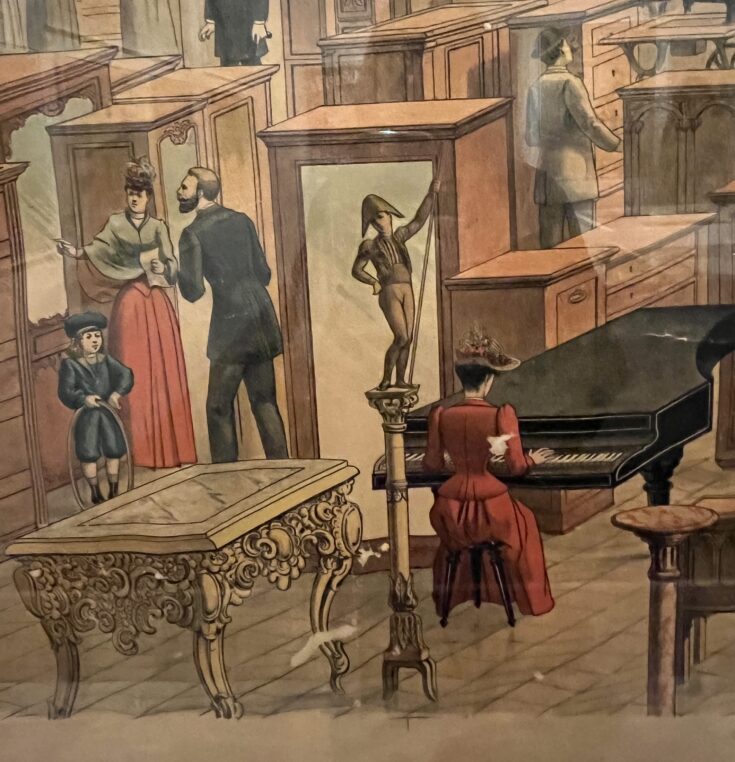
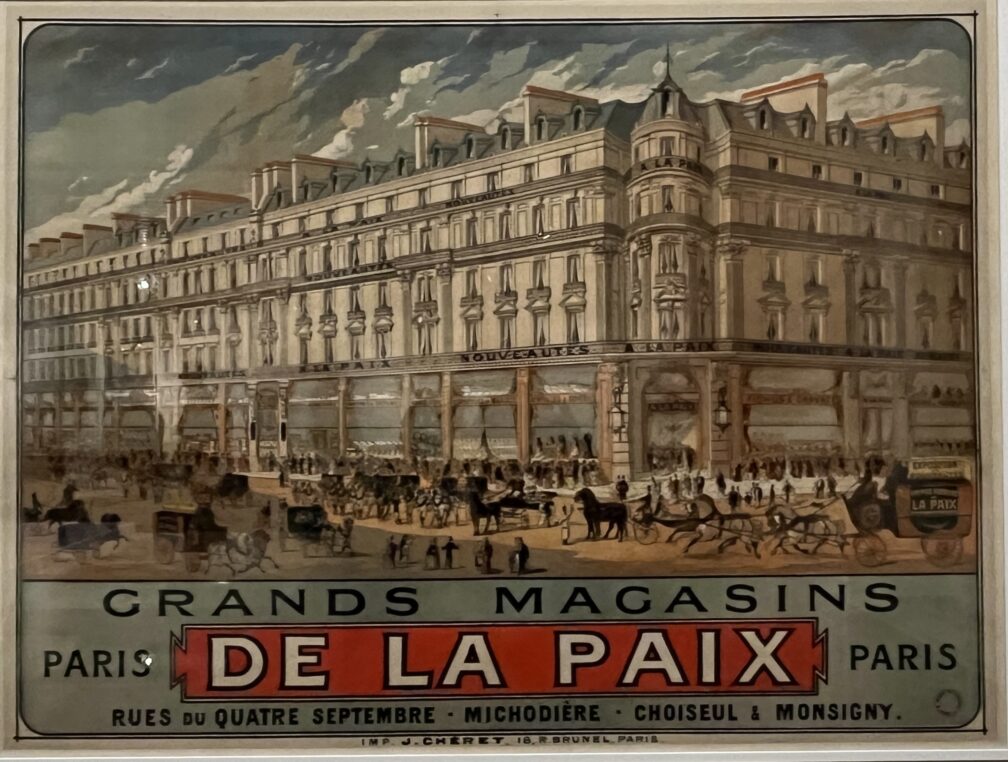
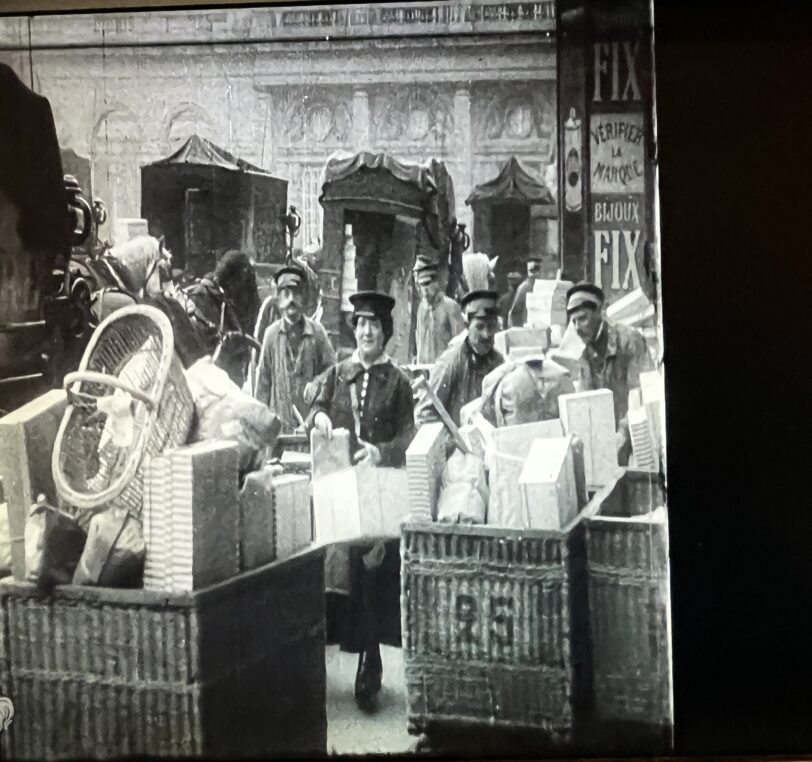

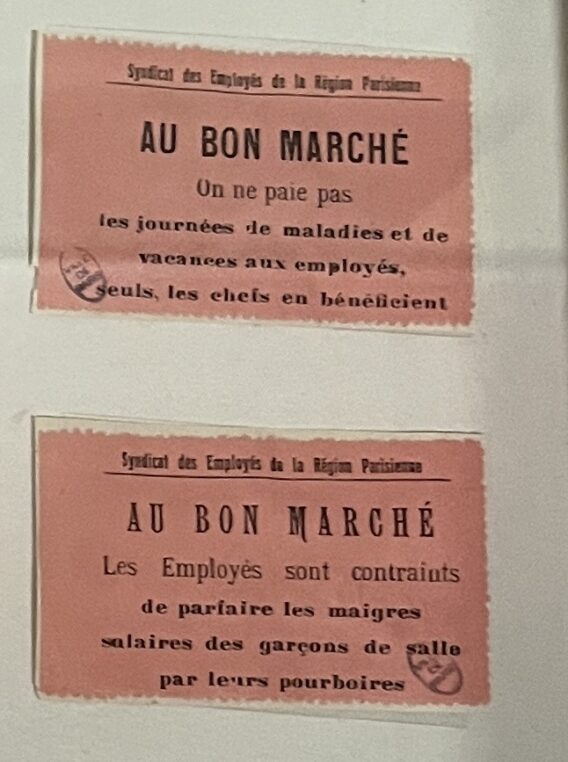
3 Comments on “Departement stores are revived at MAD”
What a marvellous and timely idea for an exhibition ! Peter Gay made us read Au BOnheur des Dames at Yale, way back when…and I loved it because I made my holiday money working at Marshall Field. And whereas the pay at these stores was no doubt pathetic, it did provide a small opportunity for well presented girls to exist off the streets. Department stores were incredible cultural phenomena – they were the first places where respectable women could eat alone outside the home. And those of our generation will remember how they were not only a window on the wider world, but temporary museums – I remember seeing Tsar Nicholas’s tablecloth and table settings on display at fields, complete with wine stains, and of course the Chinese terracotta warriors at Printemps in 1976. They were both mind. boggling. IT seems so sad that department stores are dying – Jenners in Edinburgh caught fire during renovations last year; FIeld’s, Carson Pirie, Macy’s etc are all just bland, boring places that few visit. The Paris ones still seem to have some allure, but they aren\t quite le BOnheur des Dames any longer…..Thanks for this..I will be going to see it !
Merci chère Laure, pour ce passionnant tour où tu nous emmène.
42 000 km de chemin de fer en 1930. Aujourd’hui 28 000 km.
Je suis restée en long arrêt devant la carte des chemins de fer créés autour de Paris sous le second Empire, à la même époque que les grands magasins.